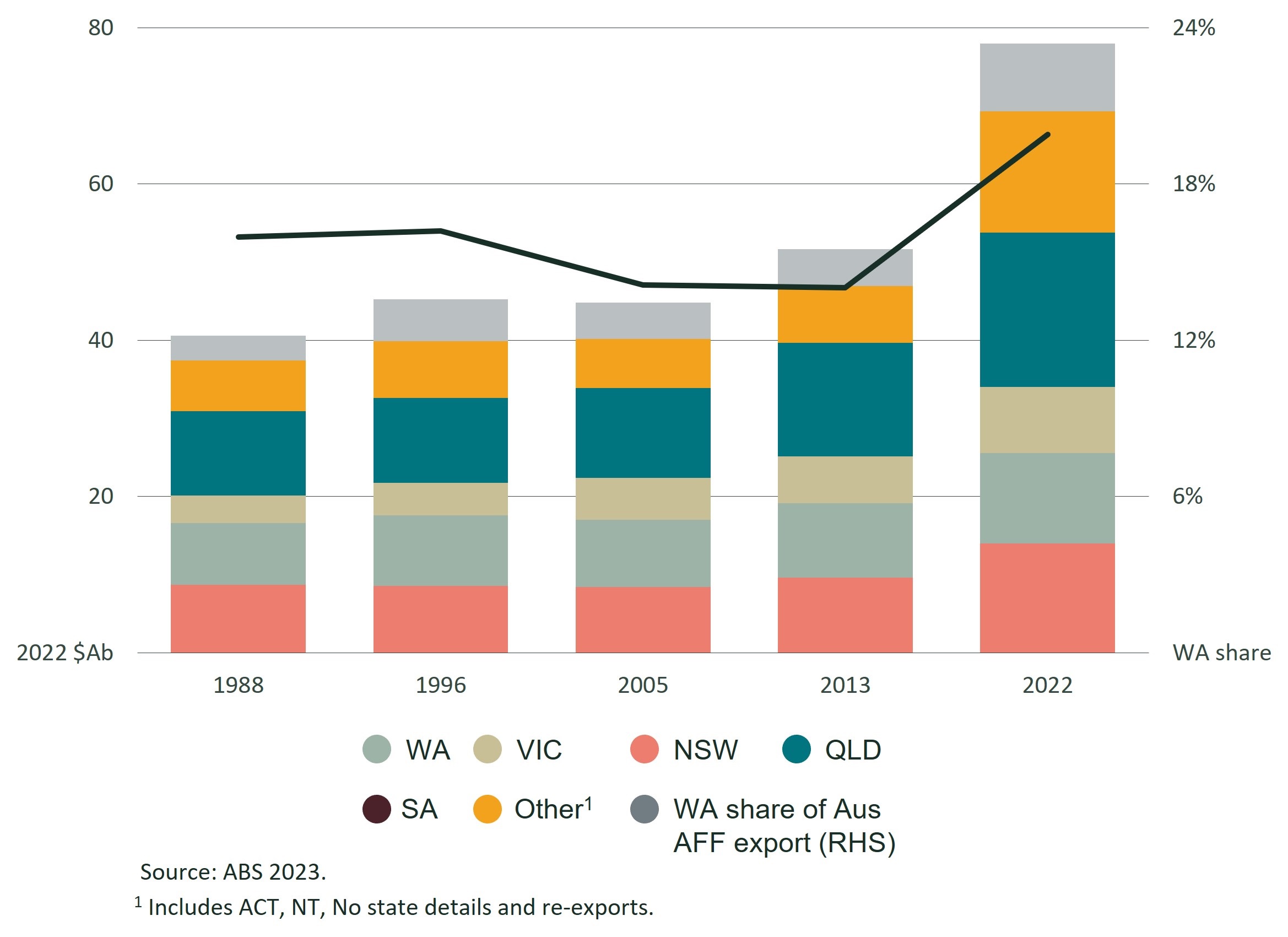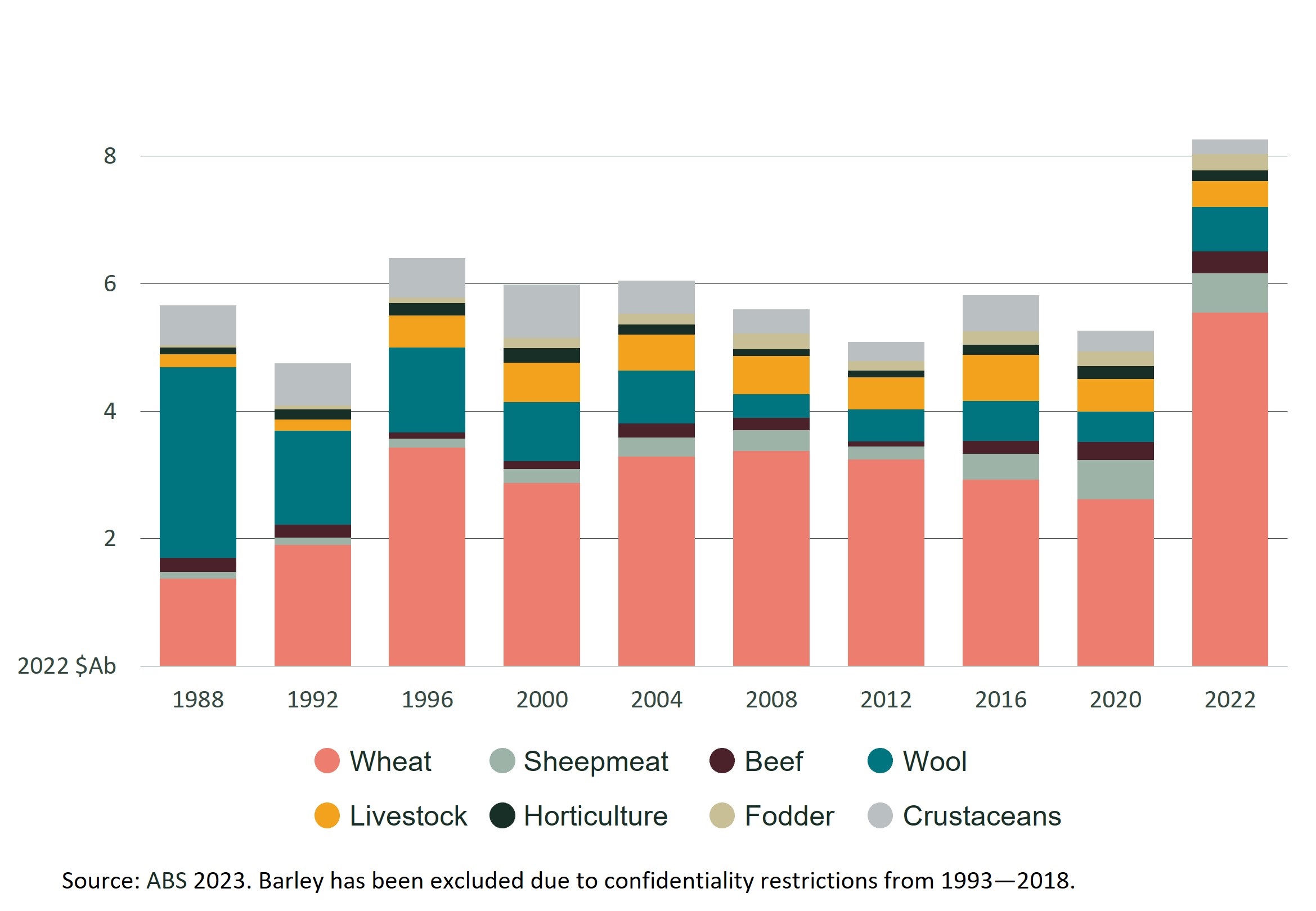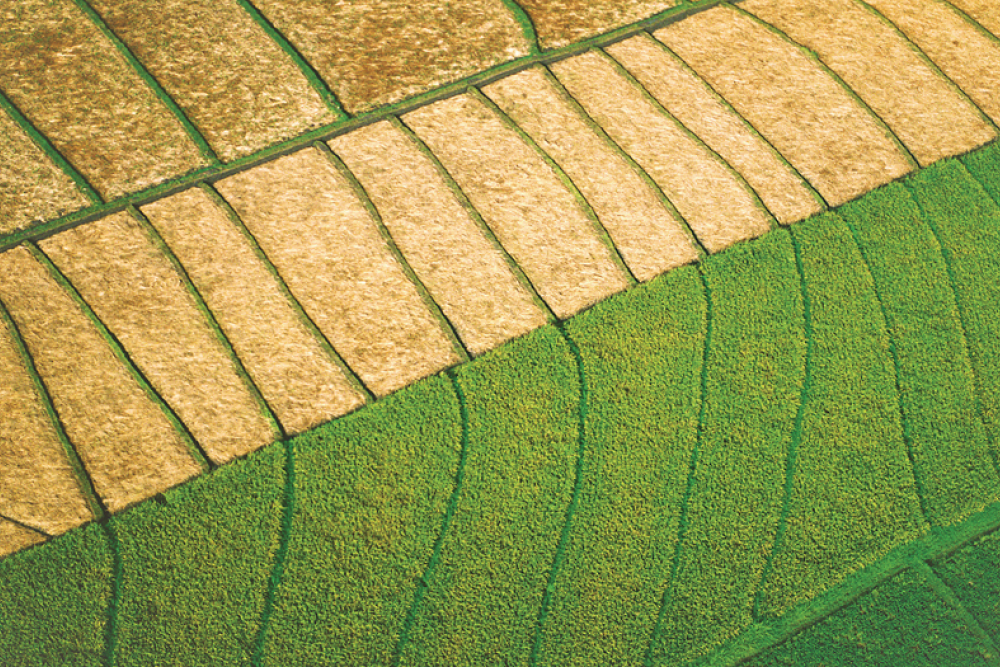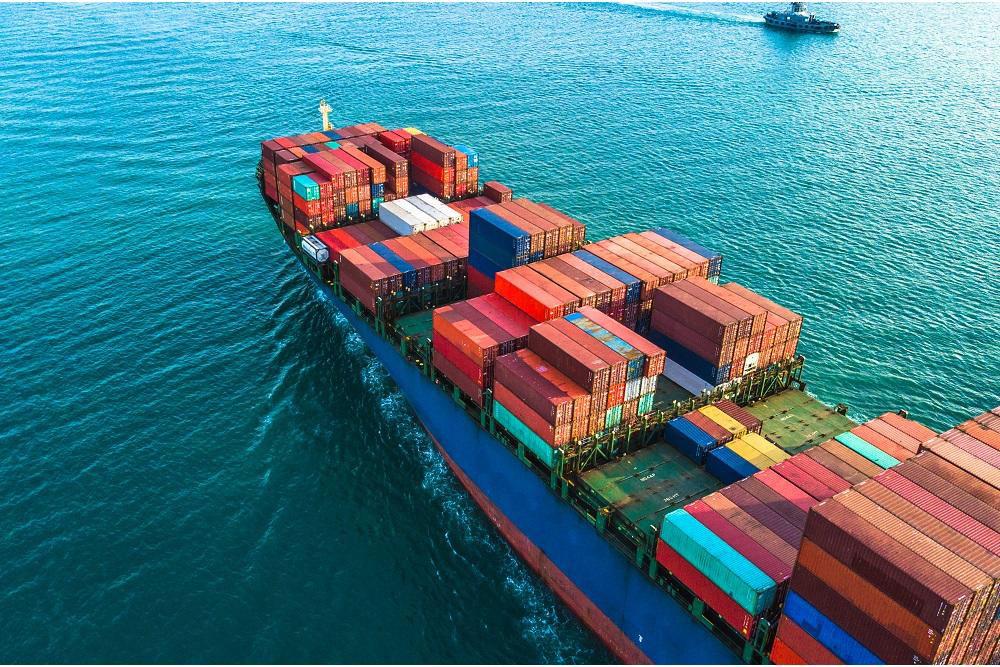Western Australia (WA) exported a record $15.5 billion of agricultural, fisheries and forestry (AFF) products in 2022. This was predominantly driven by wheat exports ($5.5 billion). WA accounted for more than 20% of Australia’s total AFF exports in 2022.
Record WA agricultural, fisheries and forestry exports in 2022
- Western Australia (WA) exported a record $15.5 billion of agricultural, fisheries and forestry (AFF) products in 2022.
- This was led by wheat ($5.5b), canola ($3.8b), barley ($1.9b), wool ($718m) and sheepmeat ($624m).
- The total value of WA AFF exports were 68% higher (in 2022 dollars) than 2019 to 2021 average.
- WA’s share of Australia’s total AFF exports has risen steadily since 2017. In 2022, a record 20% of total Australian AFF exports came from WA.
Figure 1 - Australian agricultural, fisheries and forestry exports
WA agricultural and fisheries exports, 1988 to 2022
- Over the past three decades, grains and meat have replaced wool as WA’s largest AFF exports (Figure 2).
- Record crop production and high global prices in 2021 and 2022 drove the value of WA AFF exports to record levels.
- High meat prices have helped to offset reduced production volumes.
- Wool prices began to recover in 2022 after falling due to the impact of COVID-19 on global textile supply chains.
- Exports of crustaceans continued to be limited by the effective closure of the China market and reduced disposable incomes globally.
Figure 2 - Selected WA agricultural and fisheries exports
WA wheat exports relatively consistent over time
- Since 1989, 46% of Australia’s wheat export volumes have been exported from ports in WA, including the Kwinana grain terminal south of Perth.
- Historically, WA wheat export volumes have had much lower variability than exports from other states.
- There are two key reasons why WA wheat exports are more consistent than exports from other states.
- Climate variability. The El Niño (dry) and La Niña (wet) cycles tend to have the largest impact on Eastern states. This increases the variability of grain production in Eastern Australia.
- Domestic feed demand: WA wheat production is export focussed. Eastern state wheat is more likely to be used to feed livestock (though exports are still important). During drought years, demand for domestic feed increases. During wet years, the opposite is true. This negative correlation amplifies the impact of climate variability in the East and makes WA’s wheat exports relatively less variable than exports from other states.
Figure 3: WA and other states wheat exports (million metric tonnes) and total value of Australian wheat exports (2022 A$)
Download
Western Australia agricultural export snapshot 2022 (PDF 225 KB)
Western Australia agricultural export snapshot 2022 (DOCX 828 KB)
Connect with us
Follow our @AusAgTrade Twitter account for all your #TradeTips and Market Intel.
Subscribe to our monthly Agriculture Market Intelligence Insights newsletter







